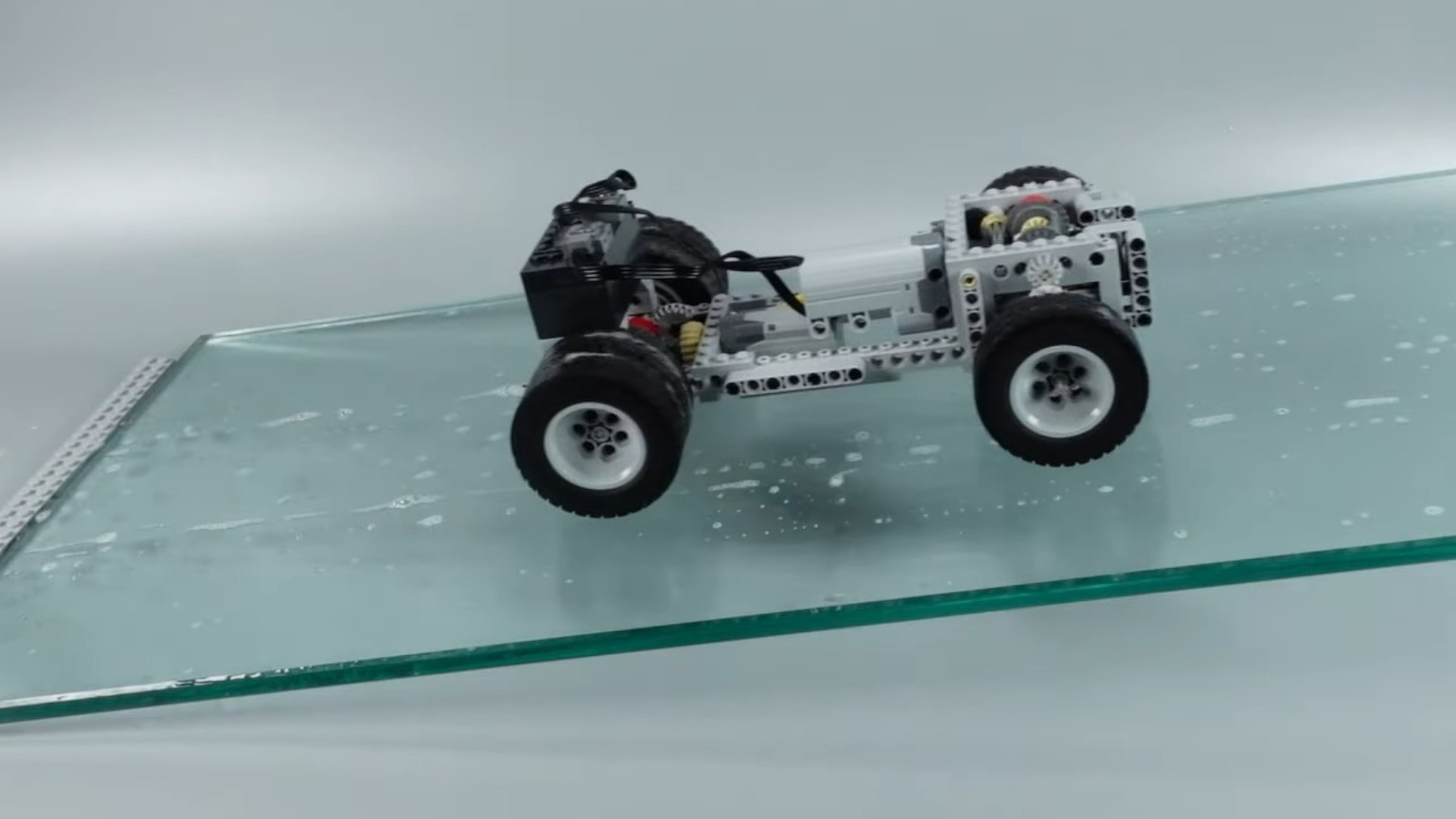

Winter is only a couple of months away, and it brings the risk of snow and ice which make driving more treacherous than usual. One YouTuber decided to study how various automotive designs impact traction in slippery conditions, and it makes for worthwhile watching.
The video from Brick Technology starts with a simple rear-wheel drive design with a single motor. It’s incapable of making it up even a shallow 5% slope as it drives on a glass surface covered with soapy water, intended to simulate driving on ice. Right away, the video demonstrates that simply putting some additional weight on the driven wheels increases traction enough to get the car moving. That’s a technique that can help you get your own car unstuck from the snow, even if you just get some friends to put their weight over the driven wheels. Just do it safely, of course.

Further mods include a locked differential, more power, and additional weight, which helps the car climb an 8% slope. A rudimentary all-wheel-drive system then does the trick to climb a 10% incline, while much wider tires help get the car past the 14% marker. We then get to see other mods like an eight-wheel-drive system and more powerful motors push the design further towards cresting a 17% hill.
Eventually, the “car” pretense is abandoned entirely for a tracked design with rubber nodules for extra grip. A variety of layouts nonetheless fail to find any grip. A rather unconventional six-legged walker then makes an attempt, being the first to successfully beat the 17% threshold, and then 40% with an eight-footed upgrade. Adding on a giant fan for thrust that’s not dependent on friction allowed it to work its way up a very steep 60% incline.

One thing the video didn’t explore is the value of proper tires and tire chains when dealing with snow and ice. This is naturally a limitation of testing a scale Lego car on glass, of course. Regardless, using winter tires which are rated for low temperatures and snowy conditions can make a huge difference, while tire chains are a similarly beneficial tool. These can often make more difference than having all-wheel drive. Something many drivers fail to realize is that all-wheel drive might help you get up to speed, but it does nothing to help you stop.
As winter approaches soon after fall, few of us will be rushing out to fit locking differentials or switch to tracked vehicles to handle the weather. Regardless, it’s good to understand the factors that influence a vehicle’s grip on a slippery surface, and it’s worthwhile to remember the skill and finesse required to drive safely in icy conditions, too. Stay safe out there!
Got a tip? Let the author know: lewin@thedrive.com